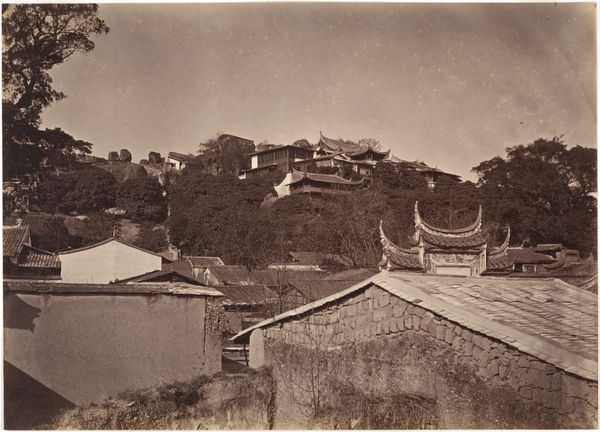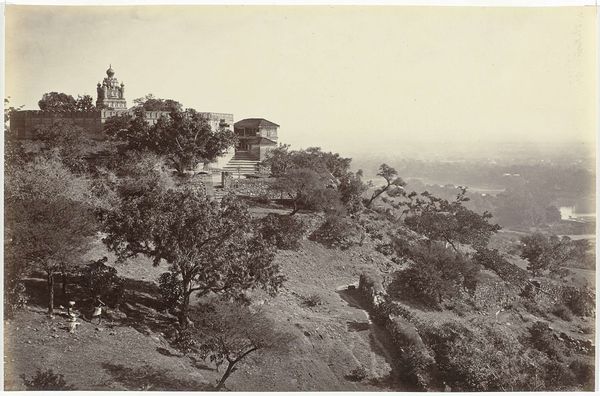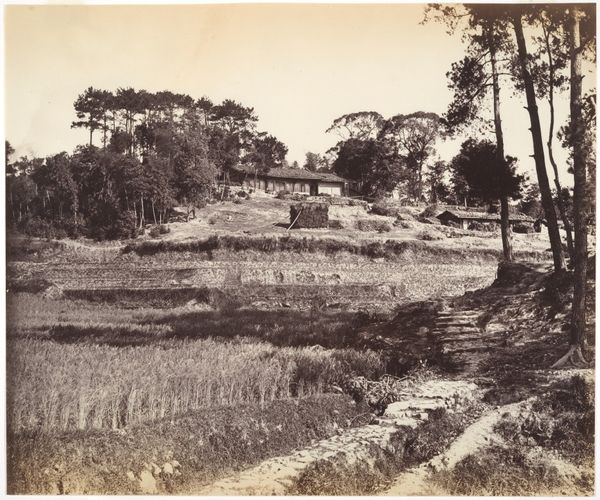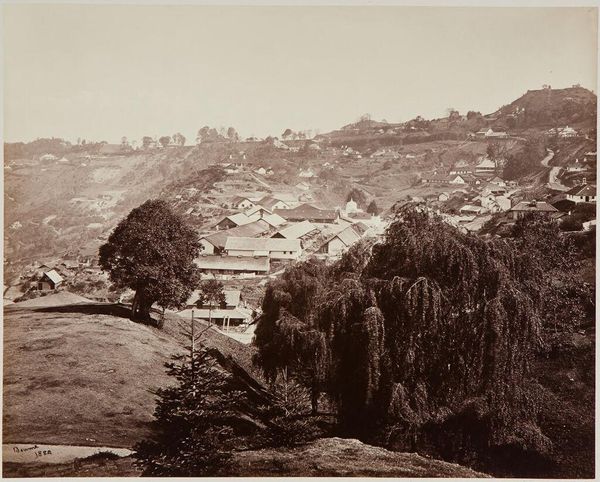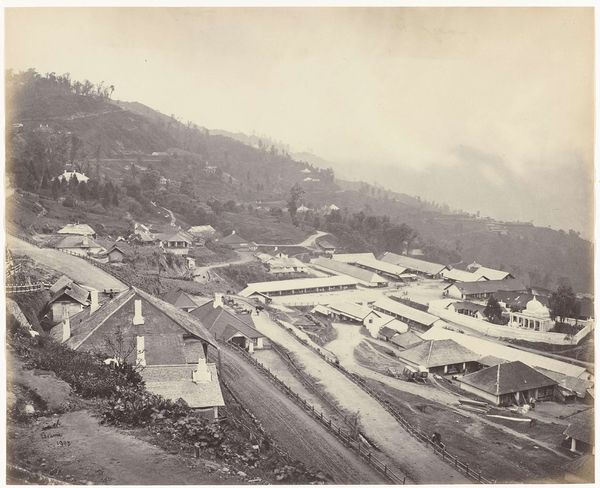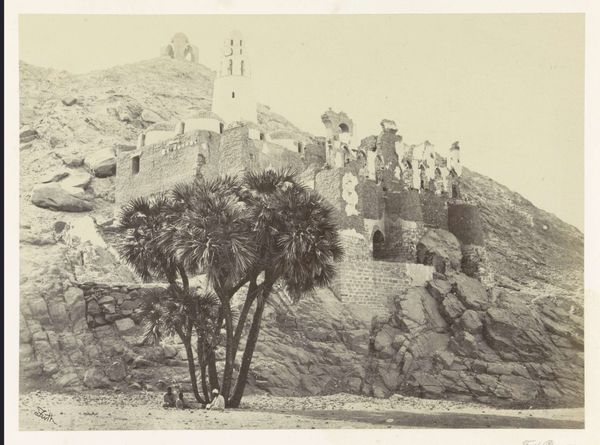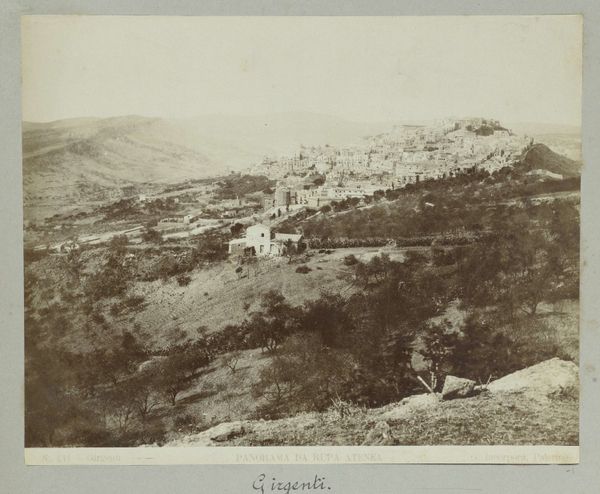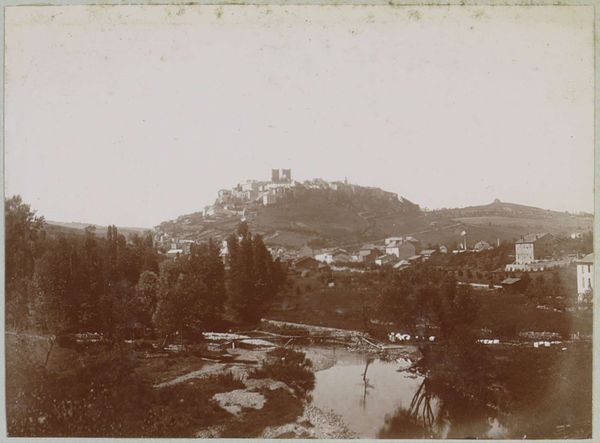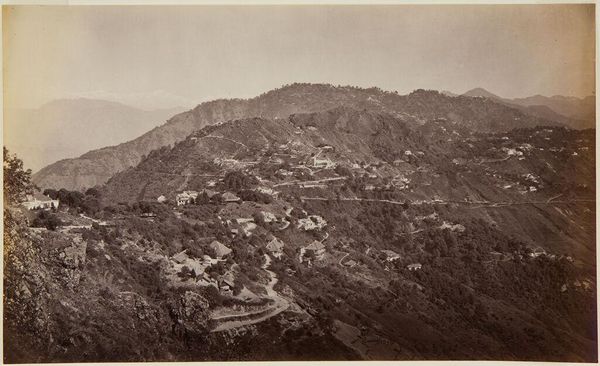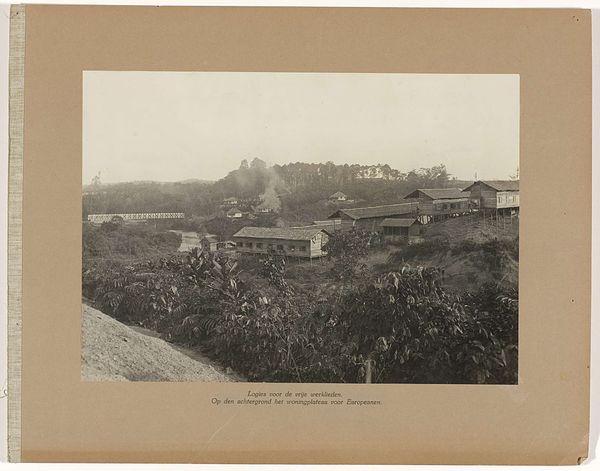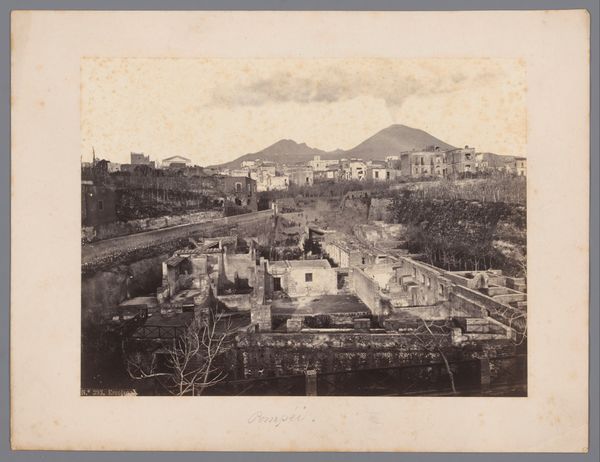
photography, architecture
#
asian-art
#
landscape
#
nature
#
photography
#
architecture
Dimensions: Image: 9 5/16 × 10 15/16 in. (23.7 × 27.8 cm)
Copyright: Public Domain
Curator: This is a landscape photograph by Tung Hing, titled "Woo-She-Shan," created in 1876. You can find it at the Metropolitan Museum of Art. Editor: The monochromatic palette immediately strikes me, creating a somber and timeless mood. There’s a real contrast between the heavy architecture and the profusion of nature. Curator: Hing uses a wonderful juxtaposition of horizontal and diagonal lines. The strong horizontal wall bisects the frame, offering a stable base. The hill behind it is an interesting element with the dynamic line quality of its angles. Editor: Walls, of course, represent boundaries, both physical and symbolic. In many cultures, walls enclose and protect. The presence of the wall might imply the safety it provides, in opposition to something unknown outside of the city's boundaries. What else do you think the city architecture communicates to the viewer? Curator: The photographic print has the textural variation. Note how the stone of the walls possesses a certain tactile roughness. It really underscores the physical and material qualities inherent in the image. The details of the wall contrast sharply with the density and smoothness of the clustered treetops that make up the hillside in the image. Editor: It brings to mind ancient fortress images. The architectural elements symbolize history and defense. It reminds me how cultural narratives of identity, both past and present, rely on symbolic fortifications. Curator: Agreed. It’s compelling how Hing manipulates the interplay between order and the asymmetrical form in natural scenery. What appear as naturally emerging, spontaneous natural structures have been controlled. It also makes me think of framing. The way our gaze is intentionally focused on what Tung Hing believed was worth recording. Editor: Very astute observations. This makes you consider photography's nature and importance as not only documentary evidence but, especially at this time, assertions of value and worth. And while some might consider it an objective art, the content that Tung Hing has decided to focus on highlights a certain cultural perception. Curator: Ultimately, Hing has offered us a layered engagement with nature, form, and history, ripe with possibility and cultural associations. Editor: Indeed, and hopefully this brief exploration gives listeners something to ponder the next time they engage with “Woo-She-Shan."
Comments
No comments
Be the first to comment and join the conversation on the ultimate creative platform.
